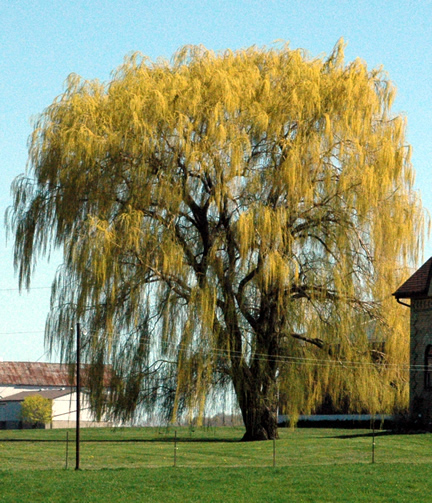| General Description | A fast growing hardy willow with long pendulous branches. Broadly weeping, golden barked with bright green summer foliage turning to yellow in autumn. |
| ID Characteristic | Slender branches at tips. Narrow silver-backed leaves. |
| Shape | Wide, spreading. |
| Propagation | Seeds have no dormancy and germinate within 12 -24 hours after falling on moist or wet sand. |
| Pests | Bacterial twig blight, scab, leaf spots, powdery mildew, rust, black canker, aphids, crown gall, leaf blight, cytospora canker, anthracnose, tar spot, imported willow leaf beetle, pine cone gall, willow lace bug and willow flee weevil |
| Habitat | Horticultural origin. |
| Bark/Stem Description | Yellowish brown to brown, somewhat corky, rigid and furrowed. |
| Flower/Leaf Bud Description | Rounded at the apex, smooth, terminal and are flattened and appressed against the stem. Yellow to yellowish brown in colour. |
| Leaf Description | Simple, lanceolate, alternate and 3.5-10 cm long, acuminate, serrulate and narrow, silver-backed. |
| Flower Description | Dioecious, entomophilous with the male and female flowers borne in upright catkins. |
| Fruit Description | Two-valved capsule containing a number of cottony or silky hairy seeds. |
| Colour Description | Leaves are bright green above, glaucous green beneath and silvery in the summer. Often turn an excellent golden yellow in autumn. |
